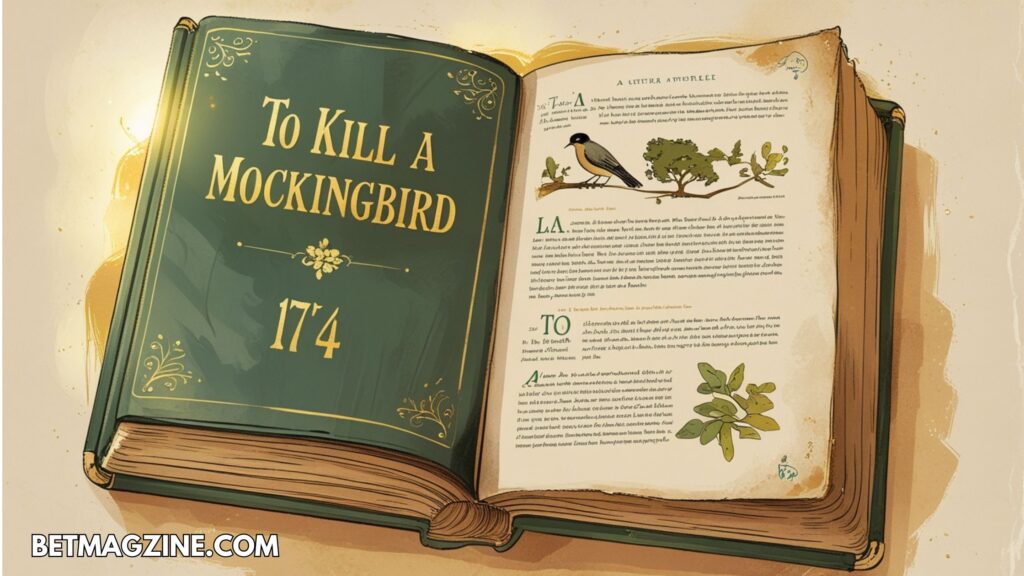Introduction
Harper Lee’s To Kill a Mockingbird remains one of the most enduring literary works in American history. Since its publication in 1960, it has been lauded for its powerful depiction of racial injustice, moral courage, and childhood innocence in the Deep South during the 1930s. Despite—or perhaps because of—its controversial subject matter, it has been taught in schools across generations. Yet within its pages lies a specific moment that continues to spark discussion: page 174. This page, which occurs during the pivotal courtroom trial of Tom Robinson, contains language and themes that have become the subject of educational and cultural debate.
Page 174 is notable not just for the legal drama unfolding in the narrative but also for the racially charged language used by characters within a historically accurate, yet deeply uncomfortable, context. The N-word appears in this section—raw, unfiltered, and emotionally jarring. Its inclusion was never meant to sensationalize but rather to reflect the brutal reality of systemic racism, a reality still echoed in modern society.
In this article, we will explore the literary, educational, and cultural implications of this page, and how its themes continue to resonate today. We will break down the content of the page itself, reflect on the challenges of teaching it in a classroom setting, examine its rise as an internet meme and social commentary, and explore how it reinforces Harper Lee’s greater moral vision. By the end, you will have a complete understanding of why a single page in a classic novel has become a point of conversation, discomfort, and, ultimately, critical reflection.
Part 1: Literary Context – What Happens on Page 174?

Page 174 falls within Chapter 20 of To Kill a Mockingbird, at the height of the trial of Tom Robinson, an innocent Black man falsely accused of raping a white woman, Mayella Ewell. The trial is central to the novel’s plot and themes. By this point in the story, readers have already seen the deeply rooted racial bias in the fictional town of Maycomb, Alabama, and page 174 intensifies this through the testimonies, cross-examinations, and Atticus Finch’s calm but morally powerful defense.
On this page, racial slurs are used by characters like Bob Ewell and even quoted during court proceedings. These words are not used for shock value; instead, Lee writes them as a reflection of how normalized dehumanizing language was in 1930s America. For modern readers, especially younger students, this is often their first direct encounter with a literary work that does not shy away from racial epithets.
The courtroom setting is vital—it is here that truth is supposed to matter, that justice is meant to be blind. But what becomes clear is that justice bends to the will of prejudice, and page 174 is one of the key places where this becomes most evident.
Part 2: Language and Moral Dissonance
The central conflict of this page lies in the disconnect between language and morality. When characters like Bob Ewell use racial slurs, it reveals their complete lack of empathy, but it also exposes the cultural rot at the core of Maycomb. By contrast, Atticus Finch, the moral compass of the novel, carefully chooses his words, treats every individual with respect, and seeks truth above all else.
Harper Lee uses this contrast deliberately. She invites readers to confront language that is painful, not to endorse it, but to make them uncomfortable enough to ask why such words ever had power in the first place. This moral dissonance—the distance between who we are and who we wish to be—sits at the heart of page 174.
Atticus says earlier in the novel that “you never really understand a person until you consider things from his point of view.” This page challenges us to see the world not just through the eyes of Scout or Atticus, but also from the often invisible position of people like Tom Robinson, whose humanity is denied with every slur.
Part 3: The Classroom Debate – To Read or Not to Read?

Page 174 has become one of the most debated passages in American classrooms. Teachers are faced with the difficult decision of whether to have students read the N-word aloud or to skip over it. Some schools have gone so far as to ban the book entirely, citing the discomfort and harm it can cause, especially for Black students.
Supporters of teaching the page as-is argue that erasing uncomfortable history prevents meaningful learning. They believe students should be exposed to the raw truths of racism and injustice, and that shielding them from this reality undercuts the novel’s educational purpose.
Opponents argue that repeated exposure to racial slurs—even in literature—can retraumatize marginalized students, normalize hate speech, or create an environment of discomfort and anxiety. In classes where students are not racially diverse, the reading can become especially problematic, often leading to misunderstanding or misuse of sensitive content.
As a result, many schools now use trigger warnings, historical framing, and even opt for alternative texts that tackle race more subtly. But this remains a deeply personal and community-specific decision, and page 174 continues to be at the center of that debate.
Part 4: Page 174 in Internet Culture – The Rise of the Meme
Despite—or perhaps because of—the tension surrounding this page, page 174 has taken on a life of its own in internet culture. Students across Reddit, Twitter, TikTok, and other platforms have created memes about the awkwardness of being asked to read aloud in class when the page appears.
One popular meme features a cartoon character sweating profusely with the caption: “When the teacher assigns you page 174 and you’re the only Black kid in class.” Another shows students volunteering to read every other page, only to suddenly “remember they’re shy” when 174 comes up.
These memes are not only humorous; they are also a form of cultural commentary. They show how literature, when brought into real-life settings like classrooms, can take on new and unexpected meanings. The memes reflect discomfort, yes—but also a deeper awareness among students about the gap between intention and reception, between education and experience.
Part 5: Harper Lee’s Intent – A Moral Reckoning

Harper Lee did not write To Kill a Mockingbird to entertain. She wrote it to expose, to challenge, and to provoke moral self-reflection. Page 174 is arguably one of the boldest pages in the entire book, because it dares to show readers the world not as it should be, but as it was—and in many ways, still is.
The novel was released during the Civil Rights Movement, and its message was clear: the American justice system was deeply flawed when it came to race. Through the story of Tom Robinson and the bigotry of characters like Bob Ewell, Lee held up a mirror to white America.
On page 174, she does not allow readers to look away. She uses the language of racists not to condone, but to confront. She places us in the courtroom not as jurors, but as witnesses. What we do with that view—whether we stay silent, speak up, or walk away—is the reader’s moral test.



